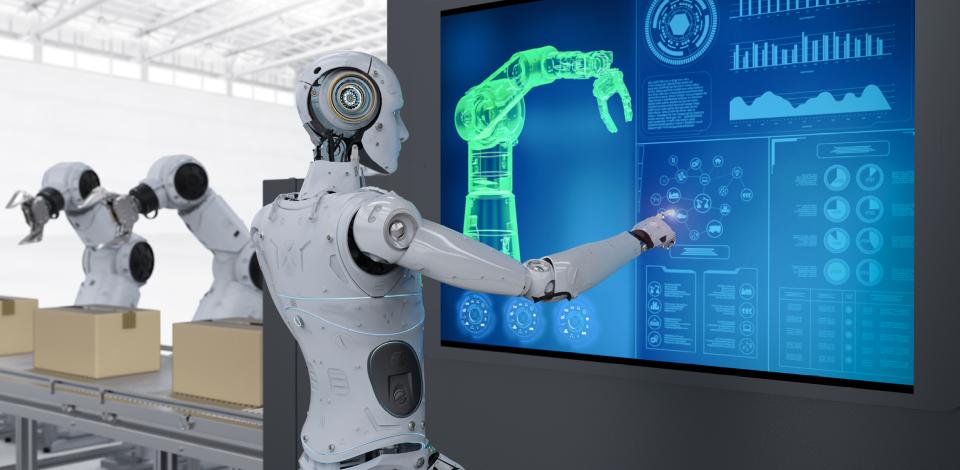Emerging Tech: AI and Your Career Resiliency
How automation will affect the future of work.

Automation has been changing the job landscape since the earliest iterations of labor-saving machines. Now, it is exploding and with each new development, we continue to see AI technology reach closer to human capabilities. Chat GPT, for example, has rocked both the industry and popular culture with its uncanny, human-like auto-generative intelligence powered by natural language processing.
Uneven Effects of Automation
At its best, new technology can allow displaced workers to shift their focus to more advanced tasks. This is important as skills like leadership, communication, and problem-solving are uniquely human. Lightcast reports that currently at least half of all jobs requiring a degree also prioritize skills in communications. Demand for these human skills receives a premium in the marketplace and is trending upwards.
But many companies across industries have also continued to invest in so-so automation. “So-so automation refers to automation that’s good enough to replace a human worker, but not so good as to create new types of jobs,” says Eric Overby, professor of information technology management at Georgia Tech’s Scheller College of Business.
These can be alluring because of their short-term benefits like cost but often have negative consequences for workers and the economy alike by displacing human workers without providing much of a boost in productivity or quality in return.
A clear example of this is found in the oil industry. Between 2016 and 2019, the number of oil rigs in the United States more than doubled, yet the number of oil rig employees dropped by about 14%. Thanks to automation, oil rigging can be done with fewer workers, but it hasn’t created any more jobs for displaced oil rig workers.
Automation doesn’t affect all jobs equally, either. The percentage of Americans employed as factory workers, for example, peaked in the 1940s at about 11%, then dropped steadily to about 4.3% in 2013 as factory work has been automated, among other factors. On the other hand, professors have increased nearly tenfold during the same period.
Economy and Quality of Life
While there are some significant negative forces to consider, the forecast for automation has a bright side, as well. As automation advances, it also expands the economy by creating new opportunities. Estimates from the World Economic Forum suggest that while 85 million jobs may be displaced by a shift in the division of labor between humans and machines by 2025, another 97 million new roles may emerge over the same period.
The creation of new jobs can be difficult to comprehend because it’s easier to see current jobs diminish than to conceptualize jobs that don’t exist yet. In fact, it is estimated that 85% of new jobs haven't even been invented yet.
We have seen this trend already in the past few decades through jobs that are now common but didn't exist previously.
Social media, for example, barely existed 25 years ago but today is an over $100 billion-dollar industry worldwide. "While it is hard to project exactly what new jobs will be created," said Stephen Harmon, associate dean of research at Georgia Tech Professional Education, "we can see rapid developments in certain sectors that will likely lead to many new jobs. For example, Space, AI, Quantum Computing, and Sustainability are all nascent industries that could be massive job creators."
Existing jobs can be changed for the better, too. Take the automated teller machine (ATM), for example. Between 1980 and 2010, there was a sharp increase in ATM installations. As their name implies, ATMs replaced human tellers, yet during this timeframe, the number of human tellers actually increased.
“Technology and automation have often made operations more efficient” Overby explains. The increased efficiency allowed banks to open more branches and employ more human workers overall.
The same report by the World Economic Report also shows that automation has the potential to increase the average overall quality of life. Machines are expected to increase their performance of task-oriented work by over 10% this year, creating more space for enjoyable, stimulating work.
Automation could also maintain or increase productivity with the same amount of human effort, allowing for more leisure time. “The amount of work that humans do in a given week has trended down over several decades. It looks like that will continue, in part due to advances in AI,” says Overby. This extra time may be dedicated to education, which could lead to more or better work opportunities, or to hobbies and relationships, which contribute to mental health and happiness.
Where We Go from Here
How do we prepare for the future of automation? There are opportunities to engage policies and influence business strategies at the macro level, as well as active steps one can take personally to become more prepared for change.
Job retraining, for example, could reduce disruptions caused by a rapidly changing and expanding economy by preparing displaced workers for new digital jobs.
"As automation continues to rise, it is more important than ever to purposefully engage in learning throughout one's career," says Nelson Baker, dean of Georgia Tech Professional Education.
Employees will need to adapt their skill sets as labor between machines and humans continue to shift and change. "By actively pursuing reskilling and upskilling in emerging technologies you can position yourself with trends as well as increase your capacity as a learner and ability to evolve over time."
Ultimately, it’s important to remember that the future of automation is not set in stone, and we have an influential role to play. “None of this is preordained,” Overby emphasizes. “We have the ability to shape the future we want through policies designed to harness the benefits and minimize harms. We also can employ personal strategies that help us protect ourselves individually as well.”
Georgia Tech Professional Education is a leader in innovative educational delivery, designed for working professionals in tech, business, and leadership. Our connection to the marketplace — coupled with our world-class faculty, researchers, and subject matter experts — provides an unparalleled perspective on education innovation, industry trends, future work, and lifelong learning. To uncover additional insights into the demographic, social, and technological disrupters of the 21st-century workforce, visit our Future of Work page.
Credits
Writer: Rachel Meyer
Editor: Shannon Helton-Amos
Digitial Producer: Shannon Helton-Amos

